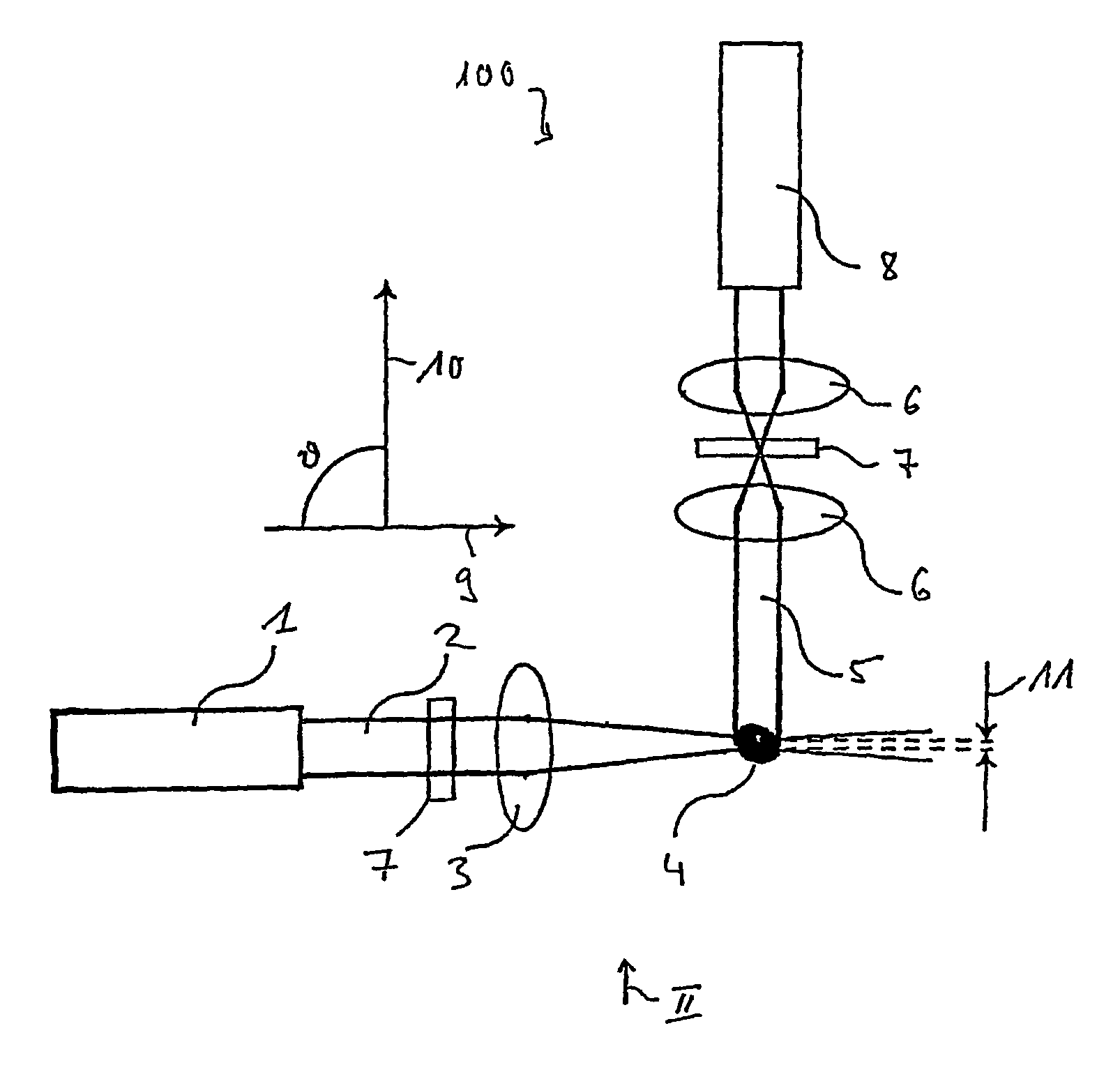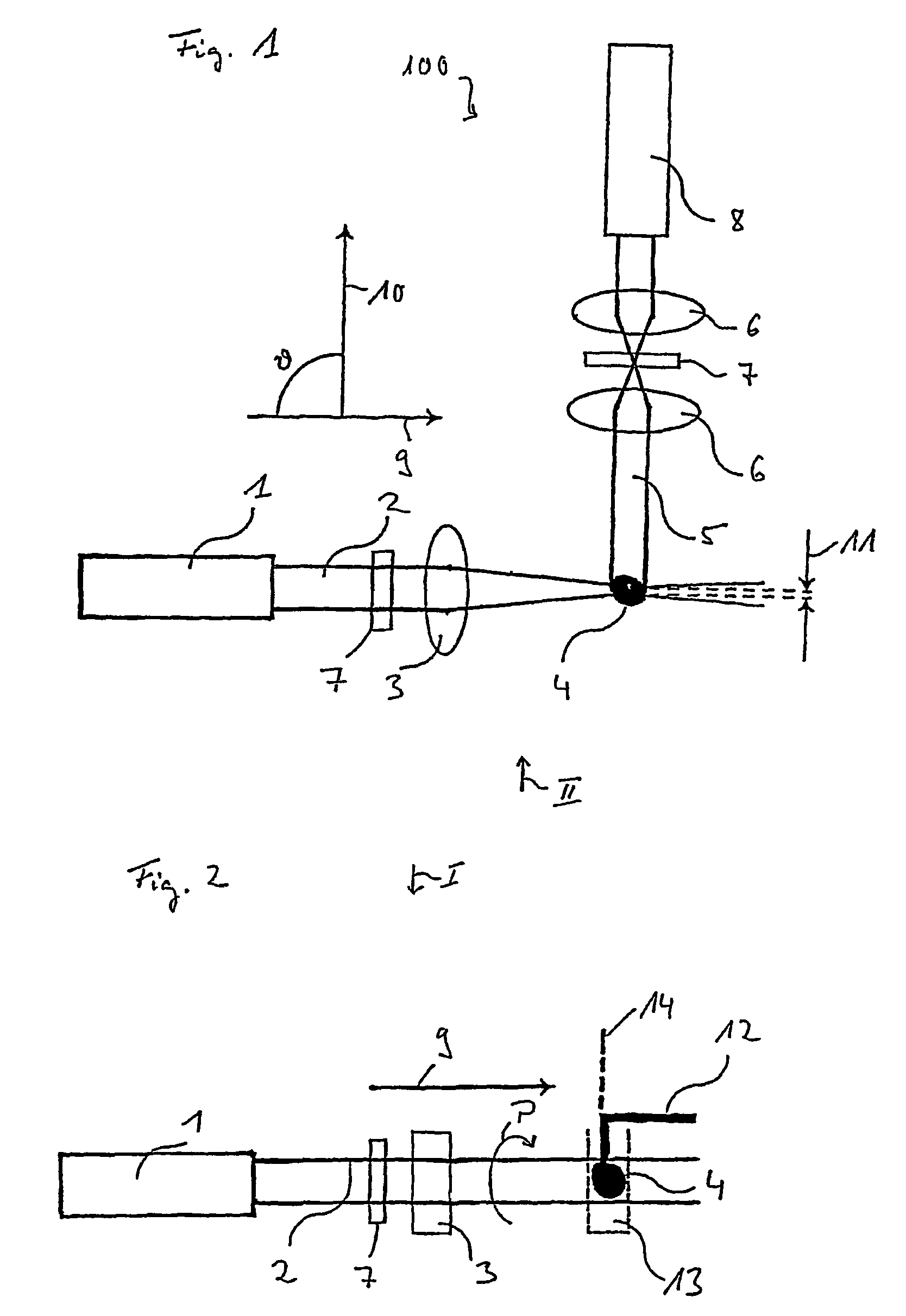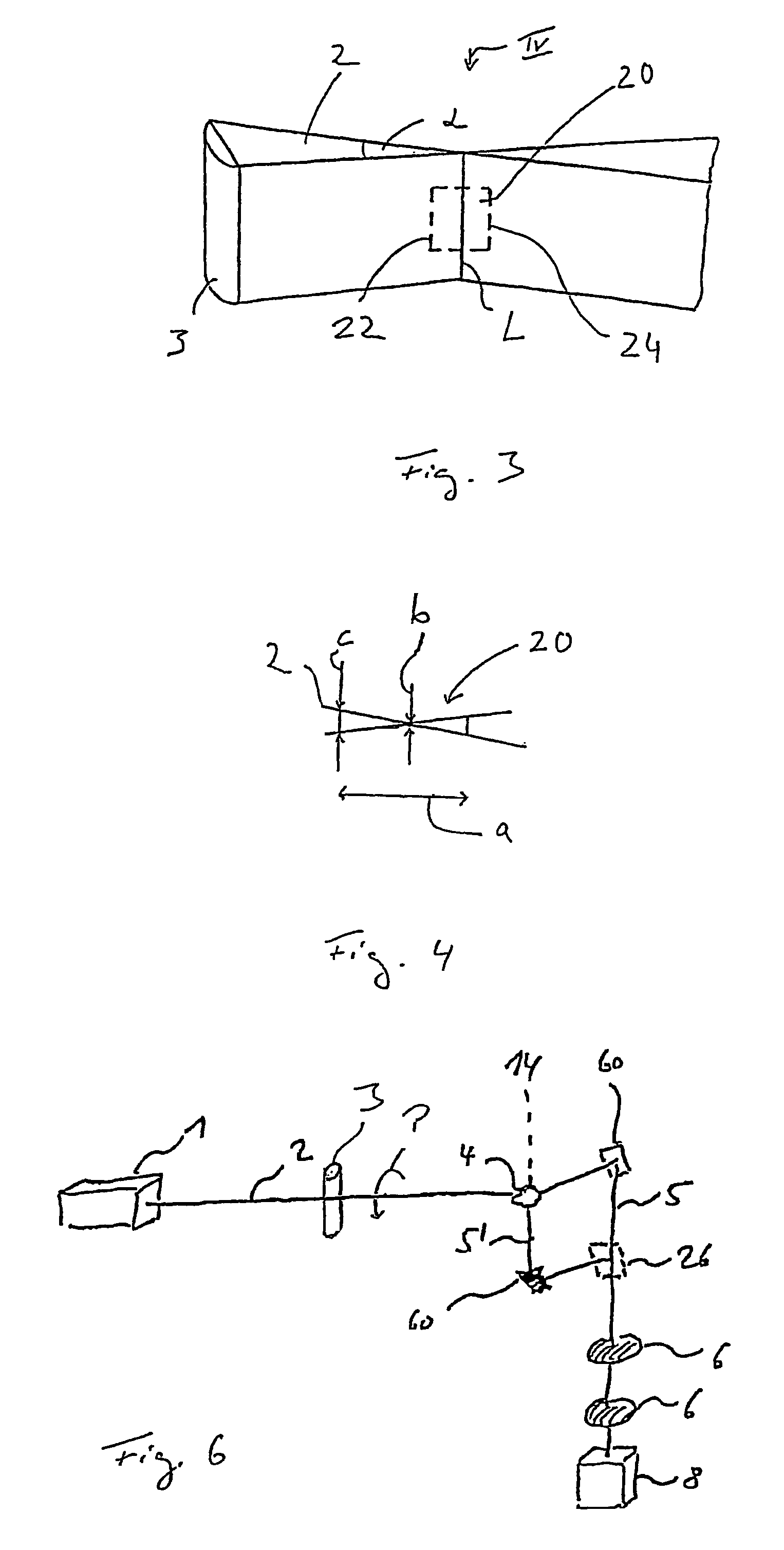Single plane illumination microscope
a single-plane illumination and microscope technology, applied in the field of microscopes, can solve the problems of reducing affecting and the difficulty of light microscopy imaging methods, so as to reduce the stress on samples, short sample examination time, and the effect of improving the quality of light microscopy images
- Summary
- Abstract
- Description
- Claims
- Application Information
AI Technical Summary
Benefits of technology
Problems solved by technology
Method used
Image
Examples
Embodiment Construction
[0058]FIG. 1 shows an embodiment of a microscope 100 according to the invention. The embodiment comprises a light source 1, a collimated light beam 2 from which is focused into a sample 4 by a cylindrical lens 3. The cylindrical lens 3 creates a thin vertical light strip 11 by which fluorescent emission can be induced in the sample 4. Fluorescent light in a detection beam path 5 is projected through detection optics 6 onto a two-dimensional detector 8. The two dimensional detector 8 can be, for example, a CCD camera.
[0059]The structure is particularly simple owing to the substantially right-angled arrangement (=90 degrees) of an illumination direction 9 and a detection direction 10. In particular, the use of dichroic mirrors for separating illumination light from the light source and fluorescent light from the sample 4 in the detection beam path 5 can be obviated. Filters 7 in the illumination beam path 2 and in the detection beam path 5 are glass filters or acousto- / electro- / magnet...
PUM
| Property | Measurement | Unit |
|---|---|---|
| focal length | aaaaa | aaaaa |
| angle | aaaaa | aaaaa |
| focal length | aaaaa | aaaaa |
Abstract
Description
Claims
Application Information
 Login to View More
Login to View More - R&D
- Intellectual Property
- Life Sciences
- Materials
- Tech Scout
- Unparalleled Data Quality
- Higher Quality Content
- 60% Fewer Hallucinations
Browse by: Latest US Patents, China's latest patents, Technical Efficacy Thesaurus, Application Domain, Technology Topic, Popular Technical Reports.
© 2025 PatSnap. All rights reserved.Legal|Privacy policy|Modern Slavery Act Transparency Statement|Sitemap|About US| Contact US: help@patsnap.com



